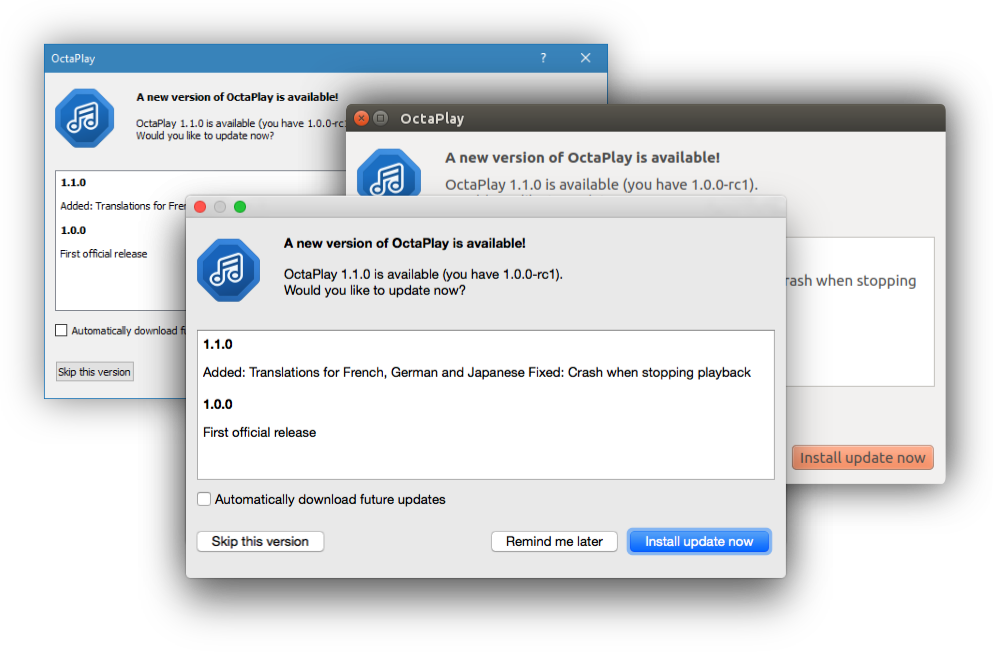Integrating DBLSQD with C++/Qt
You can use DBLSQD to add auto-update functionality to your Qt application with as few as two lines of code.
Using the SDK
The DBLSQD Qt SDK gives you platform-independent auto-updates for any Qt 5 application with just two lines of code.
Download the DBLSQD Qt SDK Full Doxygen Documentation
Adding the SDK to your application
Before you use DBLSQD in your Qt application, you need to add the
DBLSQD Qt SDK files to your project. Download the files from this repository and
put them in your project folder. Then add the following line to your
.pro file:
include(dblsqd-sdk-qt/dblsqd-sdk-qt.pri)The Drop-in GUI
The DBLSQD Qt SDK comes with a drop-in GUI solution to connect your application to a DBLSQD Feed.
Using the dblsqd::UpdateDialog
class, you get a working auto-updater that is compatible with all installation
frameworks in as few as two lines of code.

This is what the drop-in UI looks like on macOS, Ubuntu and Windows.
Of course, you can easily modify the UI with Qt Designer or build your own interface with the SDK.
#include "dblsqd/feed.h"
#include "dblsqd/update_dialog.h"
dblsqd::Feed* feed = new dblsqd::Feed("https://feeds.dblsqd.com/:app_token");
dblsqd::UpdateDialog* updateDialog = new dblsqd::UpdateDialog(feed);
Building a Custom Update Process - QML & Console Applications
If you want to build a customized update experience or integrate DBLSQD with
QtQuick/QML, you can use dblsqd::Feed without depending on QtGui
components.
Installation & Full Docs
Check out our repository for the Qt SDK for installation instructions and full Doxygen class documentation.
Manual Integration
Qt 5.x
Qt 5 includes a fully-featured JSON parser. This is why we recommend using the JSON Feed with Qt 5.x.
Qt 4.x
The easiest way to integrate DBLSQD into a Qt 4.x application is using the Appcast/XML Feed. It can easily be parsed with QDomElement.